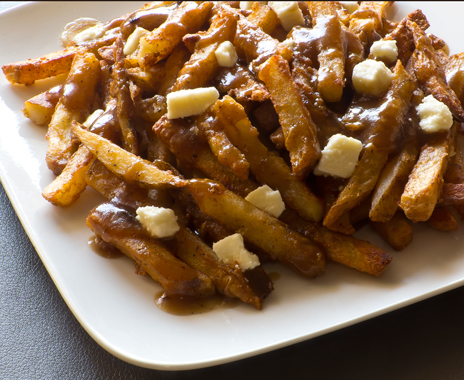What can I possibly tell you about potatoes, dear quick-serve industry professional, that you don’t already know? It’s not as though you’re unacquainted with America’s favorite starch. You may even know that it’s the world’s fourth-largest food crop, trailing behind only rice, corn, and wheat, according to the U.S. Potato Board. The U.S. Department of Agriculture (USDA) reports that potatoes are the country’s leading vegetable crop, responsible for 15 percent of total farm sales for vegetables, and that fully half of our domestic potato output is directed to food processors for transforming into french fries, chips, dehydrated potatoes, and such.
You also will not be surprised to learn that the humble spud can be prepared in a number of ways—at least 62, if I consult the dog-eared copy of my hero Auguste Escoffier’s Le Guide Culinaire, still a definitive reference work for chefs everywhere 112 years after its publication. And it’s a fair bet that the actual number far exceeds Escoffier’s original accounting.
You may not even raise an eyebrow when you learn that sliced, deep-fried potatoes, known colloquially as “french fries,” are quite popular in these here parts. Indeed, french fries are present on nearly 60 percent of all U.S. restaurant menus. And though we Americans are practically awash in fries, we still have plenty left over to share with our friends abroad: The USDA notes that in 2009, exports of frozen french fries totaled 3 billion pounds—that’s about $635 million of deep-fried, golden deliciousness we’re sending overseas.
If you’ll pardon the horrendous pun, we don’t need to dig too deep to understand the potato’s appeal. Be they mashed, fried, baked, roasted, or broiled, potatoes are the ultimate comfort food, with timeless appeal that spans cultures and generations. However, from the standpoint of today’s menu-development professional, the potato’s exceptional versatility is also, in a way, its biggest drawback. How can we possibly innovate or engineer improvements to the potato dishes consumers already know and love? Have we exhausted all the possibilities? Is there still room to maneuver?
The answer to that last question is absolutely. Here are a few ideas:
Introducing the fry bar. Salad bars and salsa/condiment bars have been with us for years. So why are french-fry fanatics generally limited to just one style, configuration, or flavor when they place their orders? Enter the fry bar, a standalone platform where consumers can customize their fries with any number of dry seasonings, sauces, dips, sprinkles, or coatings. Particularly for Millennials raised on endless choices, exotic flavors, and more social dining experiences, the fry bar would be a natural. Rather than stuffing an order of fries into a single-serve paper sleeve or plastic container, chains could instead charge a small premium to dispense fries into pre-portioned containers, into which guests could mix and match different flavors. Think of it as a sort of tapas-style french fry experience.
Hot to tot. Unlike fries, which, even in their heftiest configuration, would be difficult to stuff or fill, the ever-popular tater tot has the girth required to accommodate a center of cheese, meat, or vegetables, or any combination of the three. Imagine offering customers the ability to choose their own filling, then head for the tot bar, where they could select the same sorts of seasonings, condiments, or dipping sauces you’d find at a fry bar.
Indeed, a tater tot, in theory, doesn’t even need to look like the traditional, miniature, barrel-shaped treat we’ve all come to know and love. It could be disk-shaped like a latke, 3 or 4 inches in diameter, and stuffed with virtually anything under the sun. For that matter, a tot could occupy an entire plate and become much more than a side dish or accompaniment.
Poutine as international cuisine. Quebecers lay claim to one of the past decade’s most unlikely street-food success stories. Their traditional poutine—french fries smothered in gravy and cheese curds—was seldom seen outside the province until around 2008 or 2009, when it was somehow discovered and disseminated widely by chefs and food-truck operators in cities like New York and Los Angeles. I first mentioned poutine in this space in 2009, and since that time, it has been a fixture on menus around the country. Still, its full potential has yet to be exploited. Why aren’t we seeing more international or ethnic variations, for instance? Where’s the Thai curry poutine I’ve been craving? Or the Italian marinara poutine that seems like such a natural for a Pizza Hut or Papa John’s? Millennials would almost certainly cotton to a South American chimichurri-style poutine, an aioli poutine, or a tikka masala poutine. And the thought of a New Orleans–style étouffee or gumbo poutine doesn’t sound like a bad idea, either.
Needless to say, none of the suggestions above are targeted at the health conscious, but there are ways to make targeted adjustments. Baked potato fries or smashed potatoes—baked, boiled, or pan-fried—could incorporate many of these same basic ideas and offer a pleasing alternative to those who are minding calories and fat. The potato, remember, is actually quite nutritious in its own right; it’s fat free, and rich in potassium and vitamin C. It’s what we do with them that can make them either decadent or healthful.











